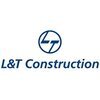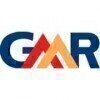Filter interviews by
J. Kumar Infraprojects Quality Engineer Interview Questions and Answers
J. Kumar Infraprojects Quality Engineer Interview Experiences
2 interviews found
I applied via Referral and was interviewed in Jul 2024. There was 1 interview round.
(2 Questions)
- Q1. What do know about Concrete? And How did you used the concrete.
- Ans.
Concrete is a versatile building material made of cement, water, and aggregates. It is used in construction for various structures.
Concrete is a composite material composed of cement, water, and aggregates like sand or gravel.
It is known for its strength, durability, and versatility in construction projects.
Concrete can be used for building foundations, roads, bridges, dams, and other structures.
It can also be used for...
- Q2. What is the steel and concrete in used of construction related work or construction sites.
- Ans.
Steel and concrete are commonly used materials in construction for their strength and durability.
Steel is used in construction for structural support, such as beams, columns, and reinforcement in concrete.
Concrete is used for foundations, walls, floors, and other structural elements.
Steel and concrete are often used together in buildings and infrastructure projects to create strong and durable structures.
Examples inclu...
Interview Preparation Tips
I applied via Referral and was interviewed in Mar 2023. There were 3 interview rounds.

(3 Questions)
- Q1. About IS code, Standard Methodology, Reference ITP & ICP, Handbook
- Q2. SP23 Hand book reference, And Soil testing related IS Code
- Q3. How to evaluate Inspection Categorization Plan
- Ans.
Evaluate Inspection Categorization Plan by analyzing its effectiveness and efficiency.
Review the categorization criteria and ensure they are relevant and appropriate
Analyze the inspection results and compare them to the categorization plan
Assess the plan's ability to identify and prioritize critical defects
Evaluate the plan's impact on reducing defects and improving quality
Solicit feedback from inspectors and stakehold
Design Mix Related IS 10262 & IS 456
Interview Preparation Tips
Some times if you don't know anything be straight
Interview questions from similar companies

Senior Engineer Interview Questions & Answers
Kalpataru Projects Internationalposted on 25 Jun 2021
I applied via Recruitment Consultant and was interviewed before Jun 2020. There was 1 interview round.
Interview Questionnaire
2 Questions
- Q1. All about Execution work.
- Q2. Long answer.
Interview Preparation Tips

Senior Engineer Interview Questions & Answers
Kalpataru Projects Internationalposted on 9 Oct 2021
I applied via Company Website and was interviewed before Oct 2020. There were 3 interview rounds.
Interview Questionnaire
1 Question
- Q1. About site handling
Interview Preparation Tips

I applied via Recruitment Consultant and was interviewed in Sep 2019. There were 3 interview rounds.
Interview Questionnaire
2 Questions
- Q1. Question about material reconciliation, allowable wastage question based on previous work experience
- Q2. It's not easy to describe it in a few words because of the interview time is more
Interview Preparation Tips

Senior Engineer Interview Questions & Answers
Nagarjuna Construction Companyposted on 4 May 2019
Interview Questionnaire
3 Questions
- Q1. Basically questions related to power distribution field & some of college courses.
- Q2. In this round questions basically related to management & technical composition.
- Q3. He only asked your previous n current financial requirements as per your interview.

I applied via Recruitment Consultant and was interviewed in Nov 2019. There were 3 interview rounds.
Interview Questionnaire
3 Questions
- Q1. My past work related questions
- Q2. Bbs, reinforcement formula
- Q3. Concrete realated
Interview Preparation Tips

I applied via Job Portal and was interviewed in Oct 2020. There was 1 interview round.
Interview Preparation Tips

I applied via Recruitment Consultant and was interviewed in Feb 2021. There were 3 interview rounds.
Interview Questionnaire
1 Question
- Q1. About my experience and what kind of job i can handle etc
Interview Preparation Tips

Senior Engineer Interview Questions & Answers
Larsen & Toubro Limitedposted on 4 Nov 2021
I applied via Naukri.com and was interviewed in May 2021. There were 3 interview rounds.
Interview Questionnaire
1 Question
- Q1. Major questions on my past work responsibilities and projects, stlc, defect life cycle, tools used, test case writing, techniques, test plan, agile methodologies
Interview Preparation Tips
Got interview through recruitment consultancy from naukri
J. Kumar Infraprojects Interview FAQs
Some of the top questions asked at the J. Kumar Infraprojects Quality Engineer interview -
Tell us how to improve this page.
J. Kumar Infraprojects Interviews By Designations
- J. Kumar Infraprojects Civil Engineer Interview Questions
- J. Kumar Infraprojects Civil Foreman Interview Questions
- J. Kumar Infraprojects Senior Engineer Interview Questions
- J. Kumar Infraprojects Safety Officer Interview Questions
- J. Kumar Infraprojects Safety Supervisor Interview Questions
- J. Kumar Infraprojects Asst Store Interview Questions
- J. Kumar Infraprojects Quality Engineer Interview Questions
- J. Kumar Infraprojects QA QC Engineer Interview Questions
- Show more
Interview Questions for Popular Designations
- Quality Inspector Interview Questions
- Senior Quality Engineer Interview Questions
- Quality Controller Interview Questions
- Quality Assurance Interview Questions
- Quality Manager Interview Questions
- Quality Executive Interview Questions
- Quality Assurance Officer Interview Questions
- Quality Assurance Quality Control Engineer Interview Questions
- Show more
J. Kumar Infraprojects Quality Engineer Interview Process
based on 4 interviews
Interview experience
Quality Engineer Interview Questions from Similar Companies
J. Kumar Infraprojects Quality Engineer Reviews and Ratings
based on 13 reviews
Rating in categories
|
Junior Engineer
176
salaries
| ₹2 L/yr - ₹4.8 L/yr |
|
Senior Engineer
168
salaries
| ₹4.4 L/yr - ₹11.6 L/yr |
|
Civil Engineer
168
salaries
| ₹2.2 L/yr - ₹9 L/yr |
|
Civil Site Engineer
149
salaries
| ₹2 L/yr - ₹6.4 L/yr |
|
Junior Engineer Civil
111
salaries
| ₹2 L/yr - ₹5 L/yr |

Larsen & Toubro Limited

Tata Projects

L&T Construction

Kalpataru Projects International
- Home >
- Interviews >
- J. Kumar Infraprojects Interview Questions >
- J. Kumar Infraprojects Quality Engineer Interview Questions

















